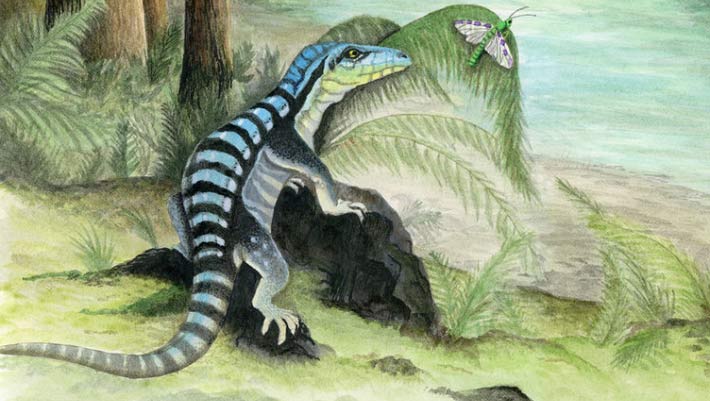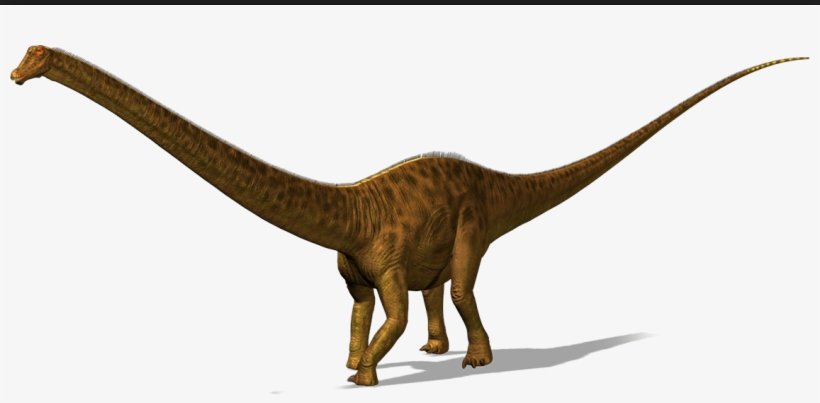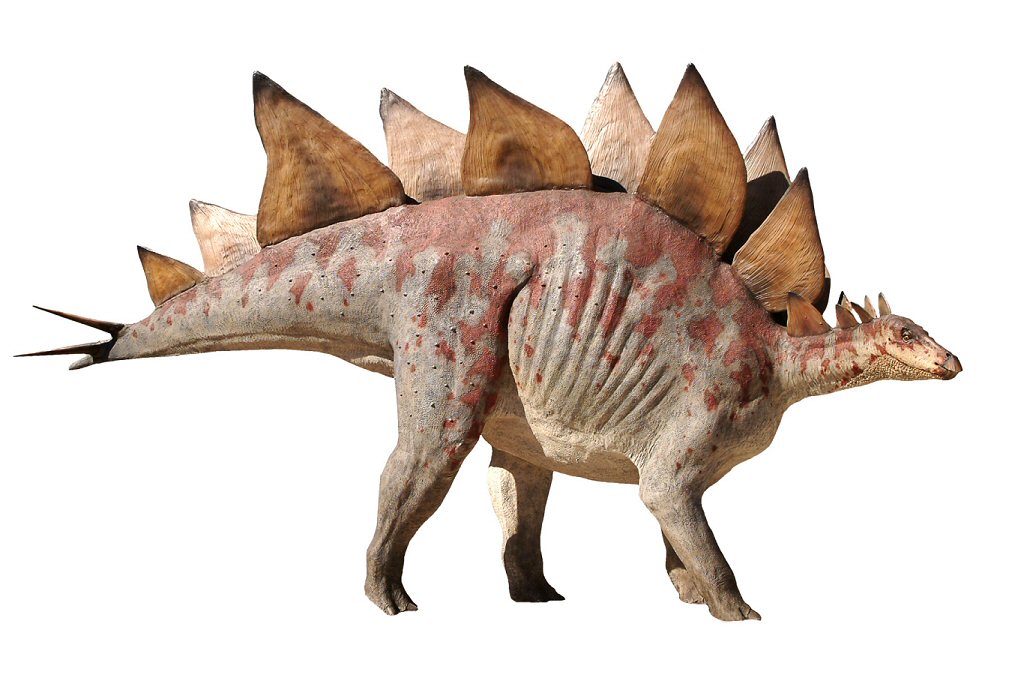There are several items of interest from the world of paleontology for this month; several newly discovered species of early life to discuss. I think I’ll start with the most ancient and work my way forward in time.
250 million years ago life on Earth suffered its greatest mass extinction event. The Permian extinction as it’s known wiped out more than 90% of the species of plants and animals, far more than were killed by the asteroid that ended the reign of the dinosaurs. Paleontologists are intensively interested not only in what caused the Permian extinction, there are many theories, but also how quickly did the Earth’s ecology recover from such a terrible blow.
Today Antarctica may be mostly an icy desert but 250 million years ago it was a warm, lush forest and a new species of reptile from Antarctica is now providing us with a glimpse into that period of recovery. The creature has been given the name Antarctanax shackletoni, the first name means Antarctic King in Greek while the second honours the Antarctic explorer Ernst Shackleton. A shackletoni was a kind of reptile known as an archosaur, a group who are considered to be the ancestor to both the dinosaurs and the crocodiles. About the size of a modern iguana, A shackletoni probably fed on insects and other small prey.

The remains of A shackletoni were discovered in rocks dating to only 2 million years after the Permian extinction indicating that life recovered more quickly than had been previously thought. One theory that is being discussed amongst paleontologists is the idea that extinction events may actually open up ecological niches, spurring evolution to generate entirely new types of living creatures. As an ancestor to both the dinosaurs and crocodiles A shackletoni is strong evidence for that theory.

My second story deals with the discovery of a new species of dinosaur proper, although a very strange looking one. We’re all familiar with the largest of the dinosaurs, the long necked, long tailed sauropods along with the stegosaurs, those dinosaurs who had bony plates along their back for protection. See images below.


Well how would you like a sauropod with a set of sharp spikes running down its back? That’s just what a team of paleontologists working in the Patagonia region of Argentina has discovered. It’s being called Bajadasaurus pronuspinax; the name means downhill lizard with bent over forward spines and it lived during the lower early Cretaceous period some 140 million years ago. See image below.

Judging from its skull B pronuspinax resembled the more familiar Diplodocus but based on the size of the discovered skeleton B pronuspinax was only some ten meters in length, less than half the size of its enormous relative. According to Pablo Gallina of the National Scientific and Technical Research Council of Argentina and lead author of the paper the bony spines must have been reinforced in some fashion, “We think that had they just been bone structures or covered only by skin, they could have been easily broken or fractured…they probably were covered by a keratin sheath, in a similar way to the horns of mammals such as antelopes.” Either way I’m sure that B pronuspinax would have been a fascinating creature to see.

For my final story I’d like to discuss a type of animal that still exists and with which we are all quite familiar, the kangaroo and when did it evolve its distinctive hop. Now researchers studying fossils of kangaroo ancestors have concluded that 20 million years ago those ancestors could hop, walk on four legs and even climb trees!

The fossils that led to this conclusion come from the northwest region of the state of Queensland near the town of Riversleigh. Most importantly the finds include very rare specimens of the feet of the kangaroo ancestors, see image below, giving clear evidence of their mode of locomotion.

The long held view was that the hopping motion of kangaroos occurred in the more recent past as a change in climate led to widespread grasslands typical of modern Australia. However these new fossil finds indicate that kangaroo ancestors were hopping very efficiently while most of Australia was still forested. According to Dr. Benjamin Kear of Uppsala University in Sweden and a member of the study, “It all points to an extremely successful animal, that’s superbly adapted to its environment and a whole range of ecosystems and it’s why kangaroos are so successful today.”
So there we have it, three more examples of the fascinating diversity of life here on Earth!
